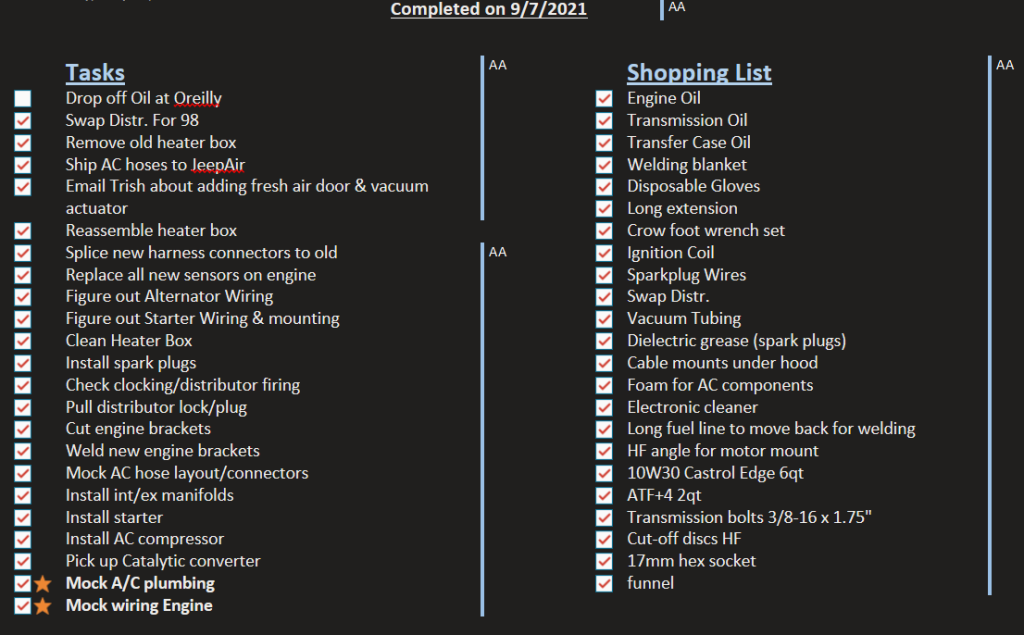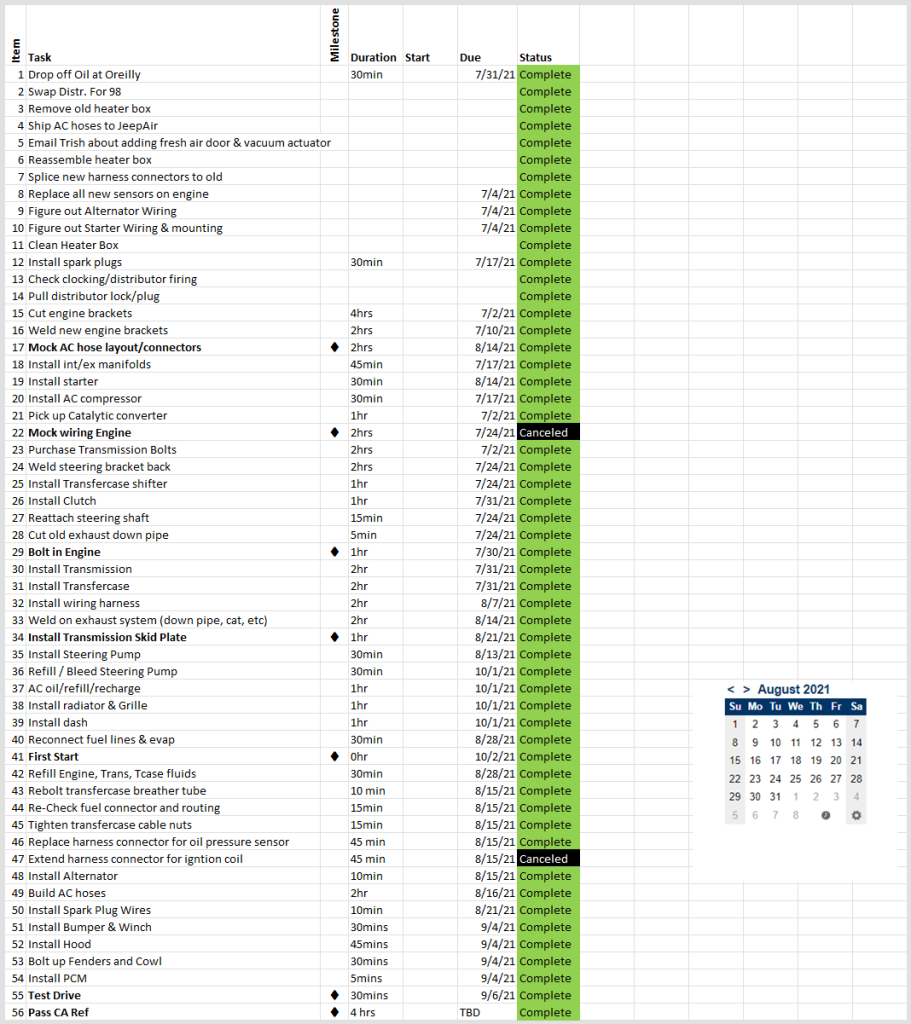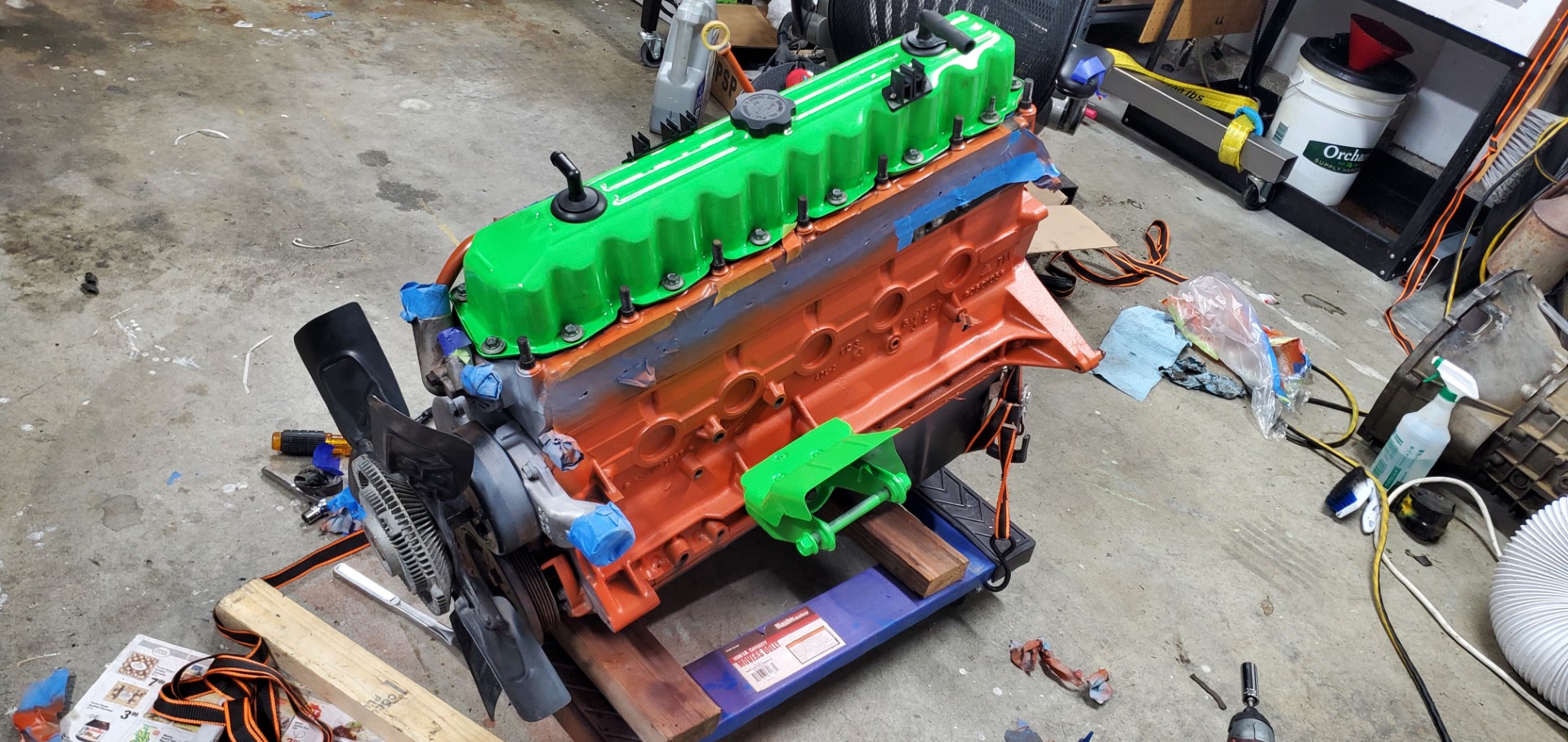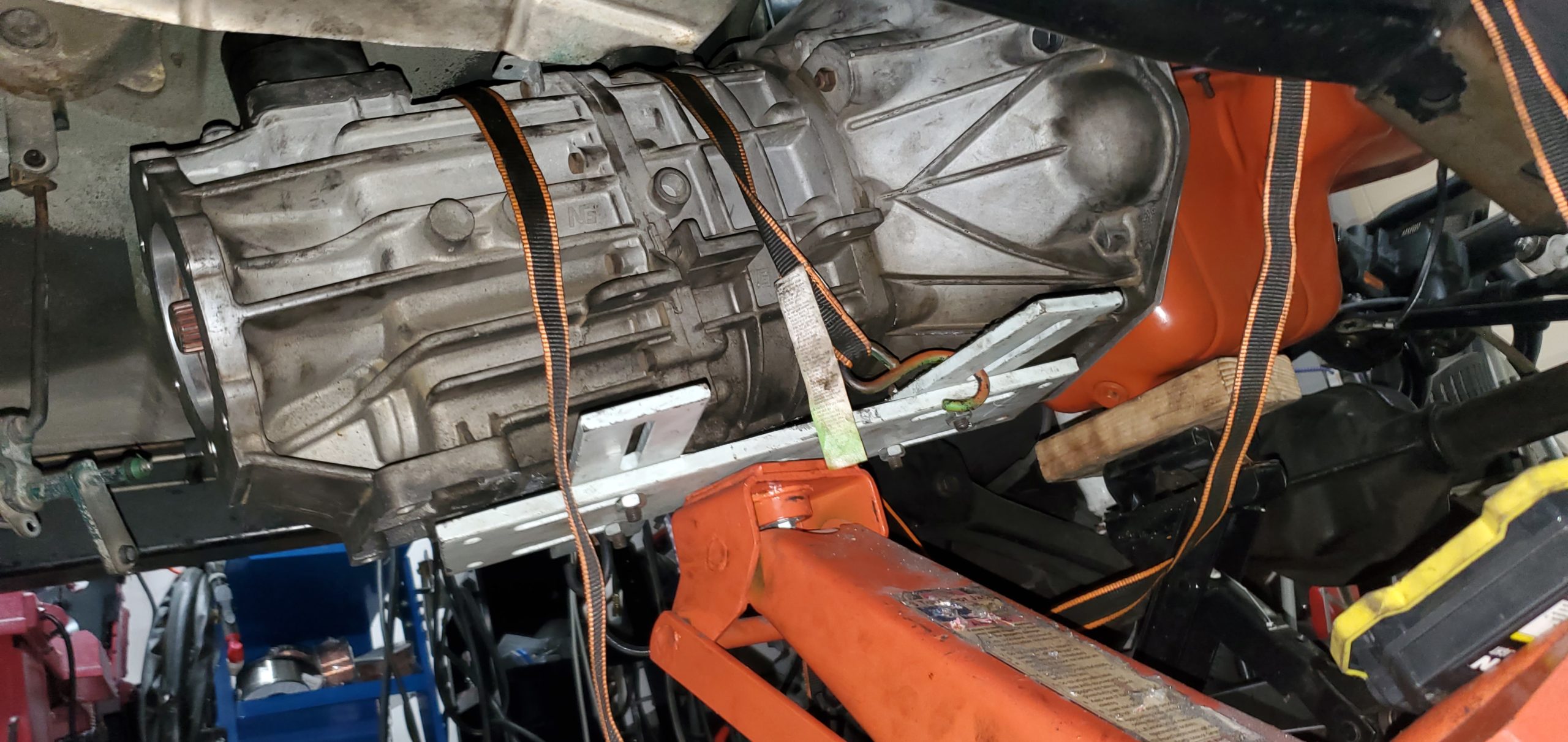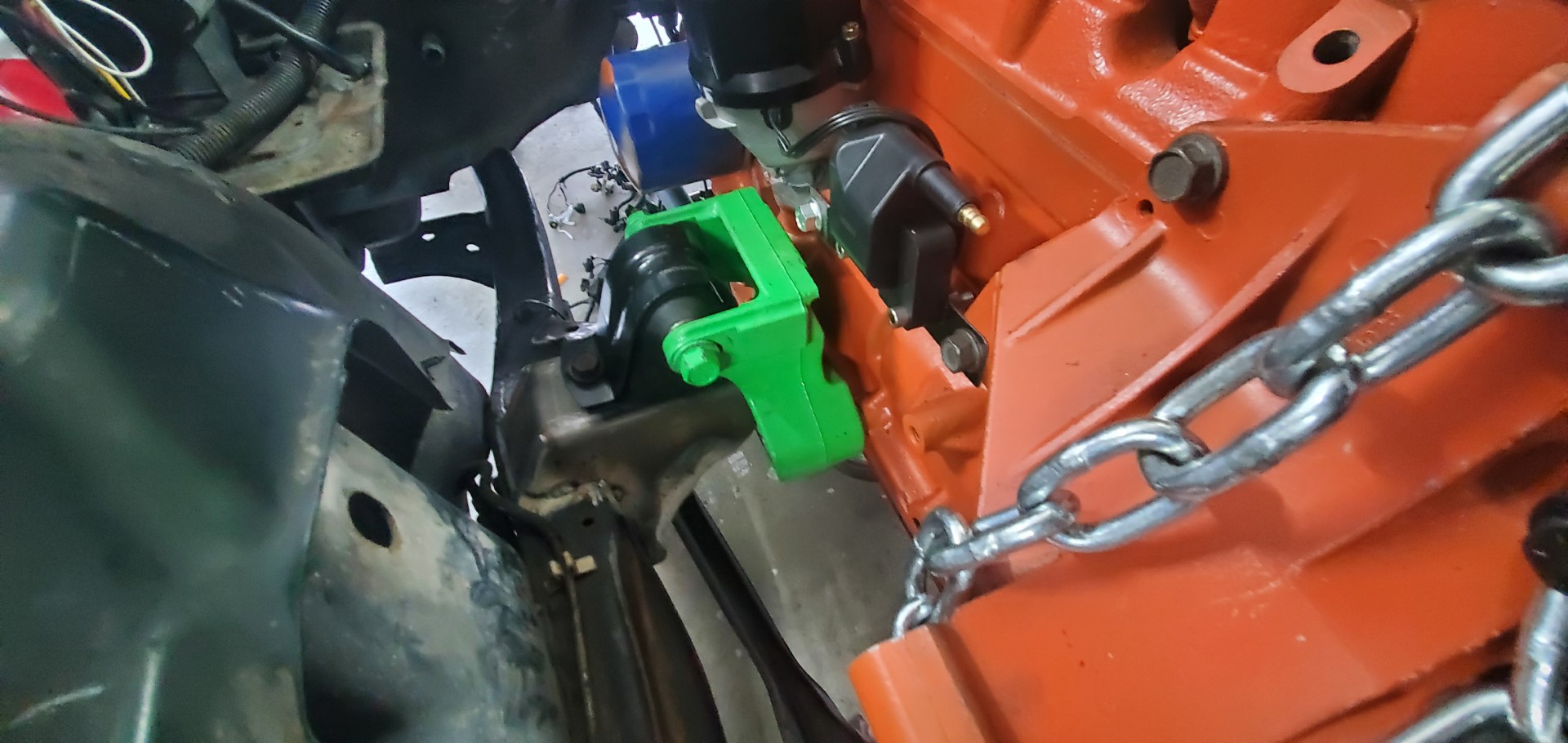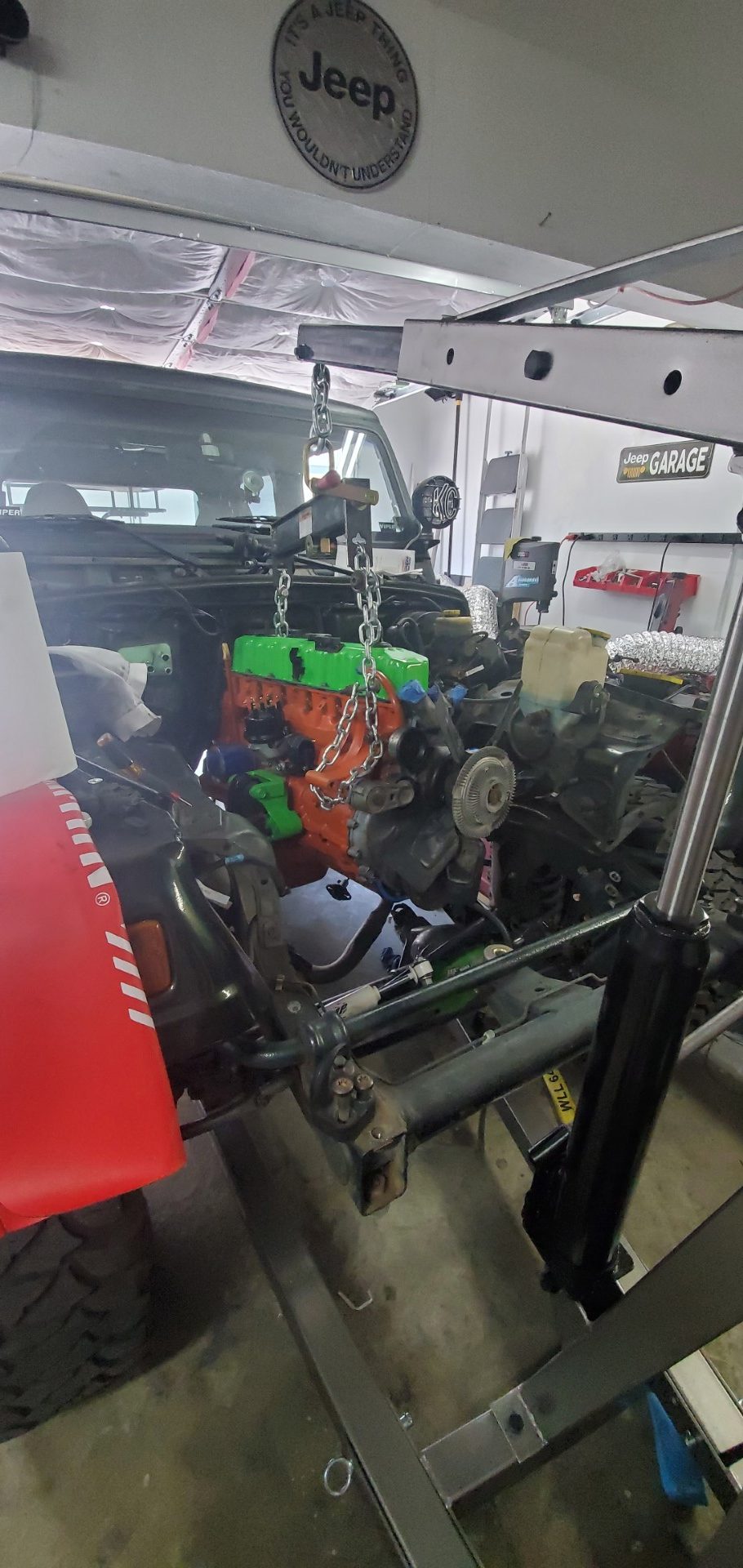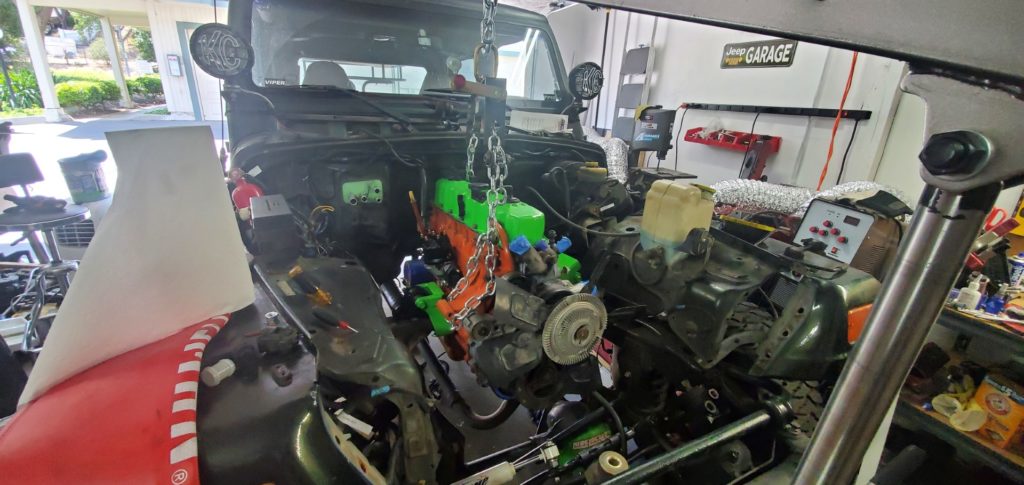
After enduring years with the aging 4-cylinder engine, I made the decision to upgrade to a more powerful option. Residing in California, maintaining compliance with state emissions regulations was a priority throughout this engine change journey (distinguished from a mere swap; read on to understand the distinction). Adhering to California emissions standards necessitated the substitution of the original 4-cylinder Jeep engine with a Jeep engine from the same year or a newer model. Extensive research led me to a practical solution: opting for an inline 6 from a 1997 to 1998 engine. These specific model years shared identical emissions components, simplifying the process. Since the inline 6 engine was offered in the same vehicle for the corresponding year, it was classified as an engine replacement rather than a swap. This crucial insight was confirmed during a meeting with a California emissions referee conducted as part of what I believed was a routine inspection interview. Following a thorough review of my information, the referee affirmed that the modification qualified as an engine replacement, ensuring compliance with California emissions standards and giving the green light for the upgrade!
Being able to only work after work and weekends on this project, it took about 4 months to complete the engine swap…err…change. I did take my time and made some additional upgrades to the Jeep while I was at it.
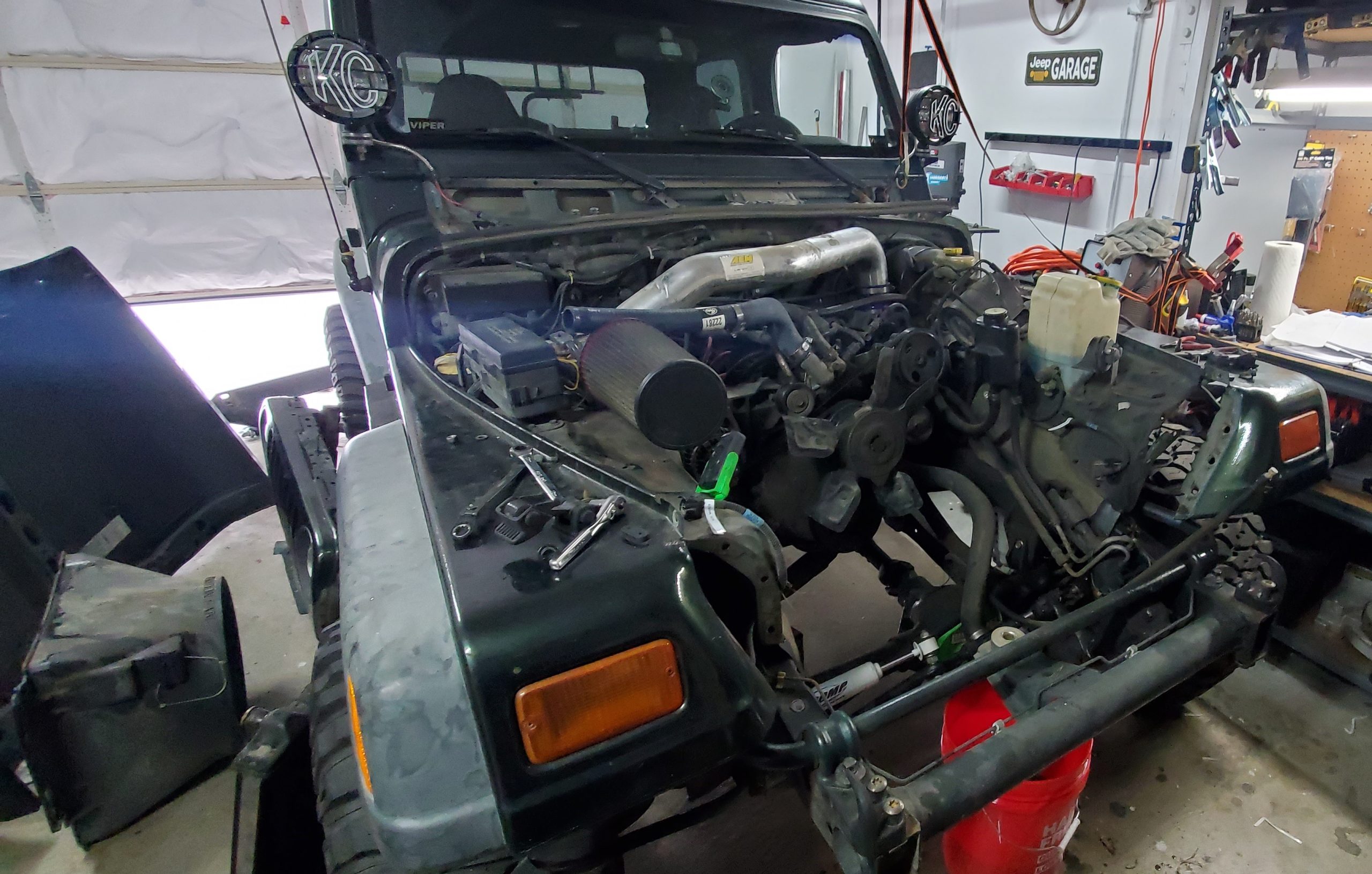
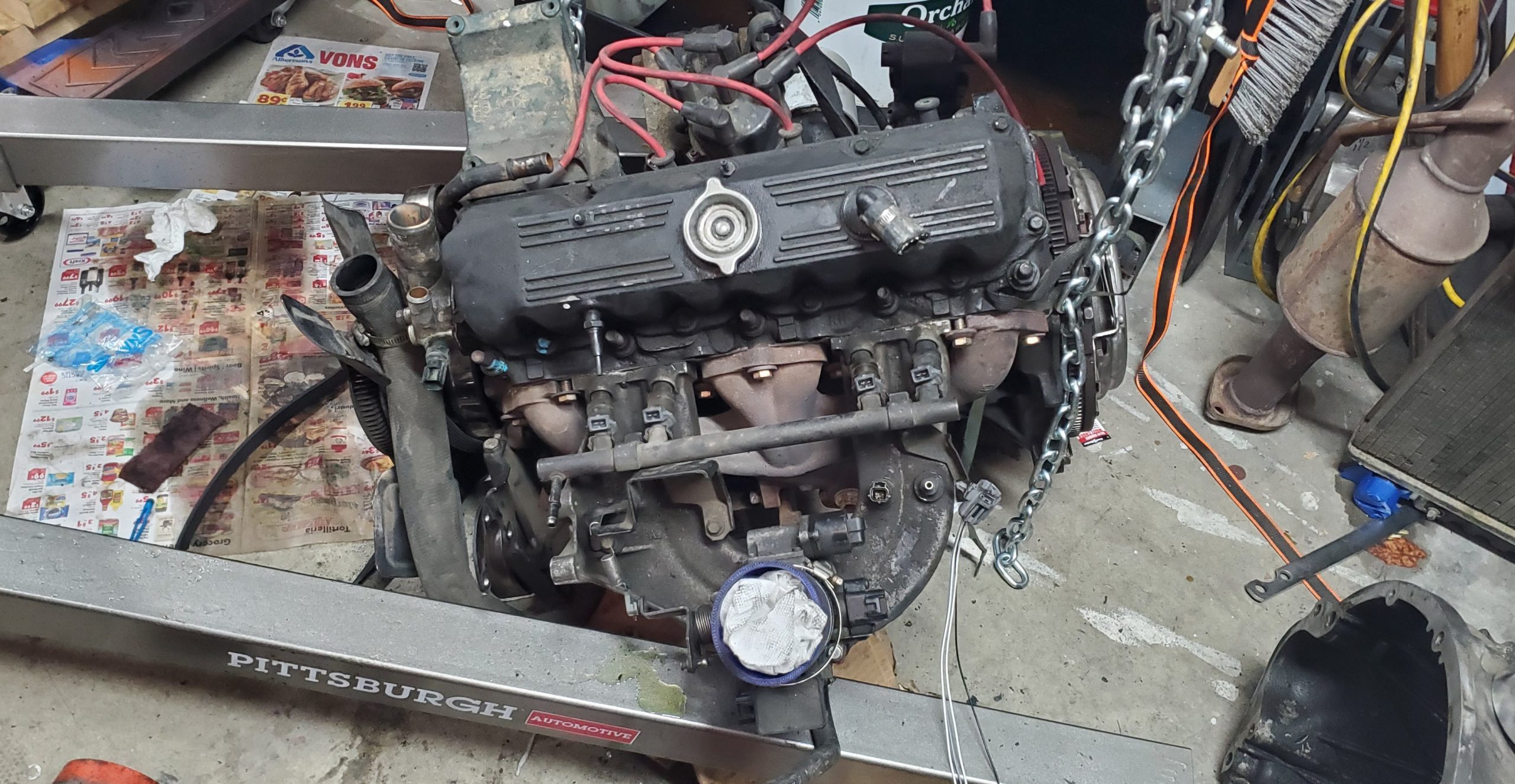
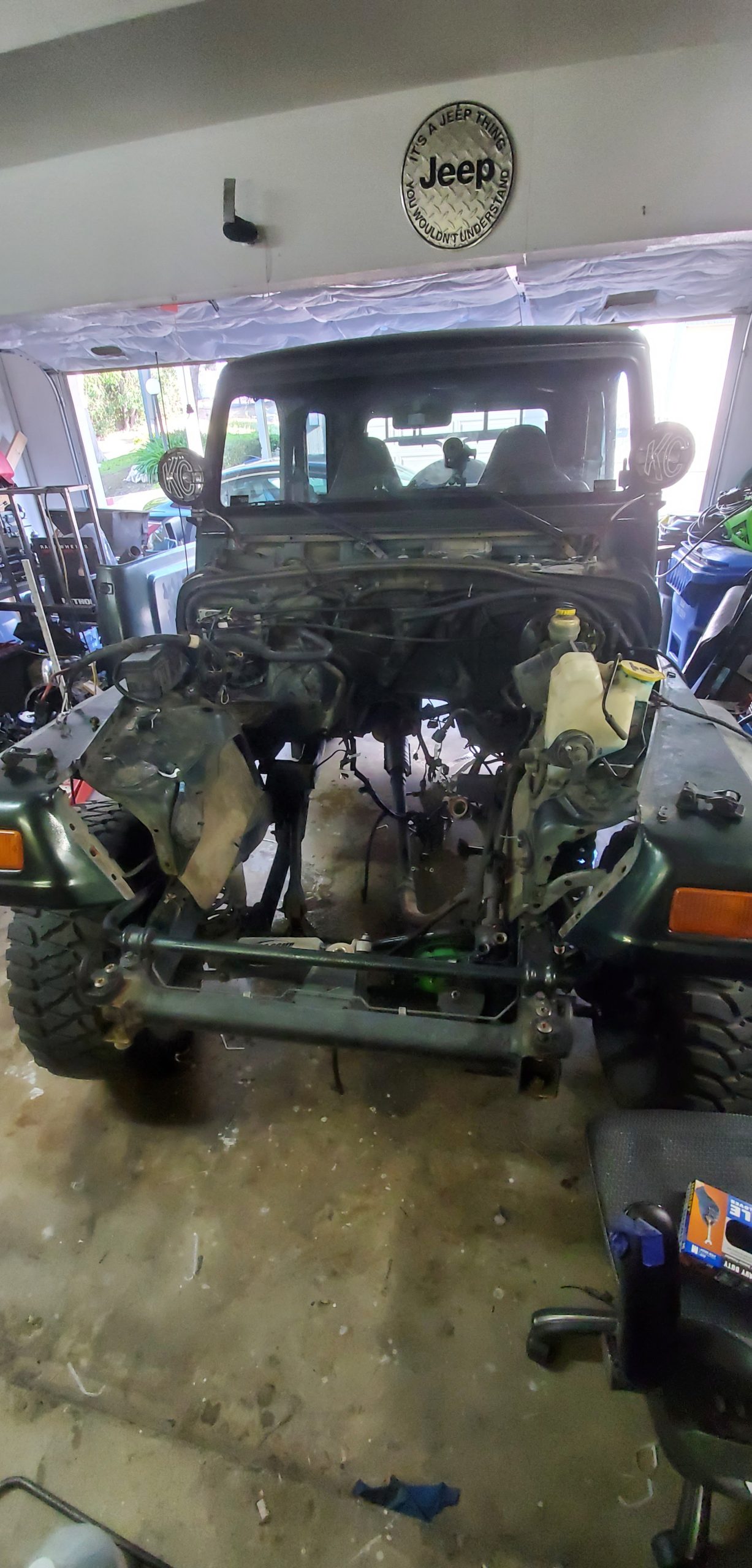
Day 1 started off with removing the hood, front bumper and front grill. Some people claim the front grill does not need to be removed, but I would recommend removing it. It makes access much easier. From that point on, it was just a matter of removing electrical harnesses, hoses, and draining the radiator prepping for removal.
The following days, weeks, and months consisted of methodically removing parts, figuring out what is to be replaced or upgraded, cleaning parts, cutting/welding/resizing mounting locations for the new 4.0 as needed, as well as figuring out all electrical wiring which is definitely not my strong point. I had to do all of this after work (9-10 hours) and weekends.
I used a few tools at my disposal to help plan, identify and track important tasks. Below are a few screenshots for reference. I used Microsoft OneNote to quickly jot down new tasks & items I would need to purchase. I created a schedule in Microsoft Excel to keep track of tasks and milestones.
